February 2010
Kaman
SH-2F Seasprite, Supermarine Seafire IIc, Bristol Sycamore![]()
Links
to related pages on this Website: ![]()
![]()
![]()
![]() This
Month's significant WW2 Anniversaries:
This
Month's significant WW2 Anniversaries:
Russian & Finnish troops continue to clash as Russia launches a major offensive on the 1st Feb.
"The Navy's here!" On the 16th Feb, Royal Navy Destroyer HMS COSSACK (Captain Philip Vian) deliberately enters the waters of neutral Norway to rescue 299 survivors of ships sunk by the Graf Spee, who are being held prisoner onboard the Nazi supply vessel Altmark. The Norwegians are angry at this infringement of their neutrality and object strongly, but do not actively interfere; COSSACK's sailors storm the vessel and secure it by force, after hand to hand fighting with bayonets (to date, this is the most recent occasion on which the RN has made an opposed boarding of another vessel).
In response, Hitler orders the German Navy to advance plans for the occupation of Norway.
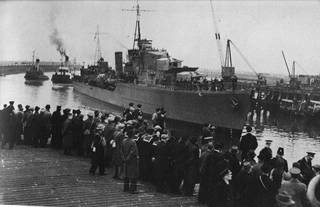
HMS COSSACK returns to Leith, Scotland with the rescued ALTMARK prisoners onboard
Lothians & Borders War Diary
1-29 February 1940 - 1st Lothians & Borders Yeomanry settle into an intensive training routine in the Arras area. The Phoney War lives up to its name, and as the weather improves, men are assigned to assist local French farmers.
Kaman SH-2F Seasprite, HSL-33 Seasnakes, Arabian/Persian Gulf, 1981, US Navy.
Airfix 1/72
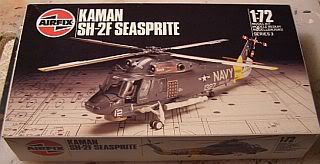
In the early 1980s, Airfix were at the top of their game and producing some superb kits which really were state of the art for their day. One of the very best of these is their Seasprite helicopter. The Seasprite was the US Navy's equivalent of the Westland Lynx; never quite as capable, successful or numerous, nevertheless, it continues in service today with the Egyptian, New Zealand and Polish Navies, nearly 50 years after it first flew. Although the Australian Navy recently tried to bring it into service for their smaller ships, they were very disappointed by the early deliveries and cancelled the order in 2007.
First released in 1983 ( a year before the similarly competent Kamov Hormone kit), the Airfix Seasprite comes with a full interior and comprehensive weapon/sensors load, making it at least the match of any of the more recent helicopter kits from Italeri or Revell. Detail is a mix of engraved and lightly raised, with some superb attention to detail, for example with the rotor trim tabs.
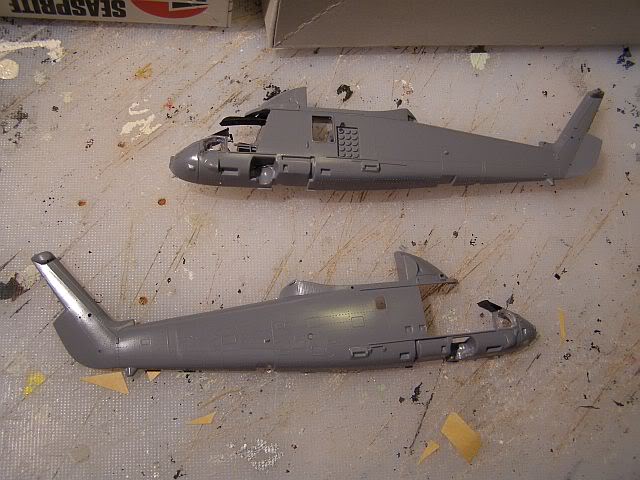
My one is a recent e-Bay buy. The kit has never seemed to be widely available; possibly suffering from the inherent marketing limitations of helicopter model kits (they look complex to build and not warlike enough), which is a real shame as this one is a real gem. As with many of my e-Bay purchases, it came with some transparent parts missing; but in this case the seller had spotted it, listed the fact on the sale and made a realistic (and successful) attempt to provide a replacement (which fitted well thanks!).
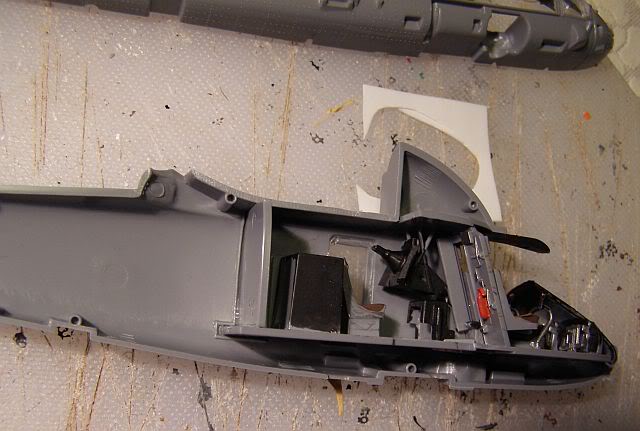
The series 3 box is literally stuffed with parts (101 apparently). Markings are provided for one aircraft and are suitably colourful. Fit is excellent, with only minimal filler needed; the main components clicked together perfectly. If you model it with the doors open (seems silly not to) the interior merits a little additional detail (I added some pipework, fire extinguishers etc). The undercarriage assembly is complex and a little fragile/vulnerable when completed (I dropped mine whilst decalling and one set of wheels fell off) as is the rather skinny main rotor head.
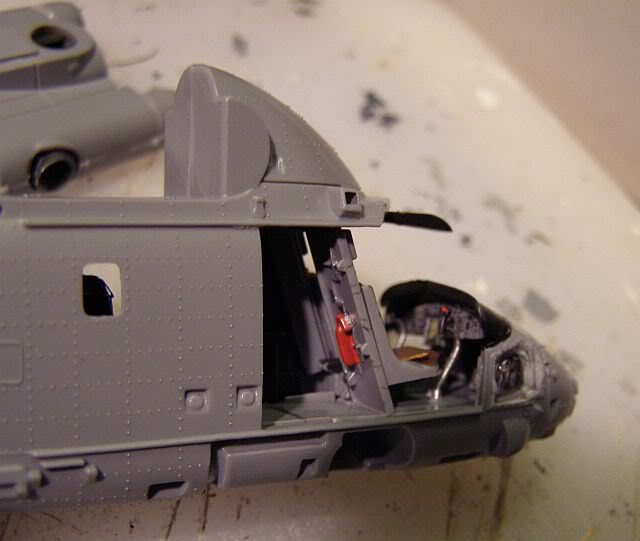
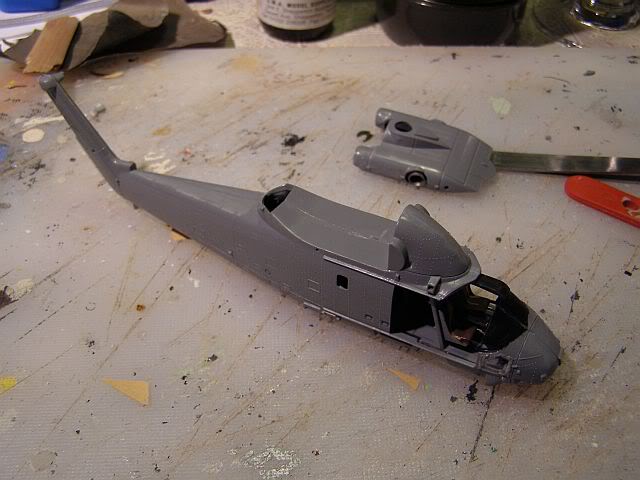
The only real disappointment with this kit are the transfers ("decals for the youngsters"). "Old" Airfix were never really feted for the quality of their decals and although the design and printing of these ones is OK (there is a very slight misalignment of the white), they are very rigid and un-stretchy, making it difficult to place them around the complex airframe shape. I tried copious amounts of Decalfix to soften them, but it had little if any effect, and I resorted to sticking them on with Klear floor polish in the end. Looking at the photographed kit on the box, its clear that Airfix's own builder had similar problems. The rotor blade decals, much as I expected. proved more of a hindrance than help; a nice idea, but I only managed to get one to fold around a blade successfully and stay there. The rest I trimmed once dry and painted over the blade leading edges. A similar issue afflicted the fold around yellow and red stripes on the tail stabilisers, which I also trimmed. I didn't even try the red/white stripes for the tail rotors.
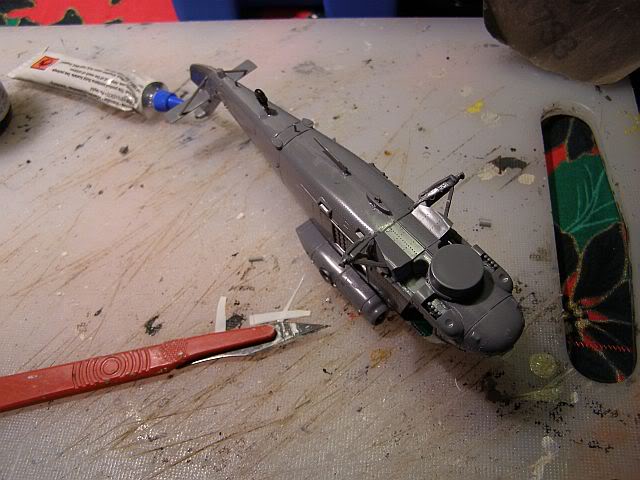
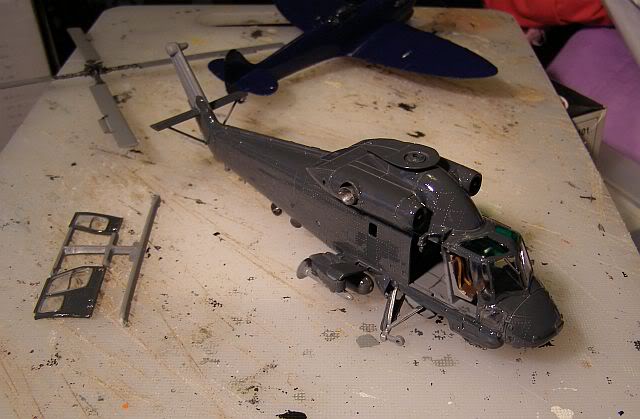
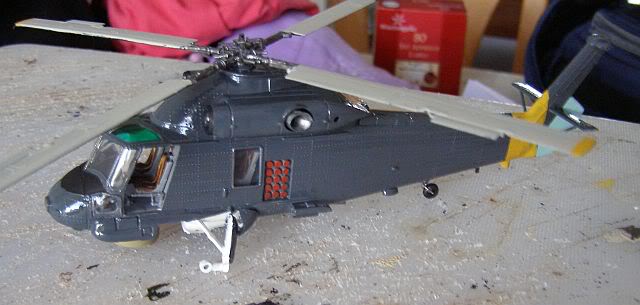
... and there we have it. A beautiful little kit of an ugly helicopter. Great fun!
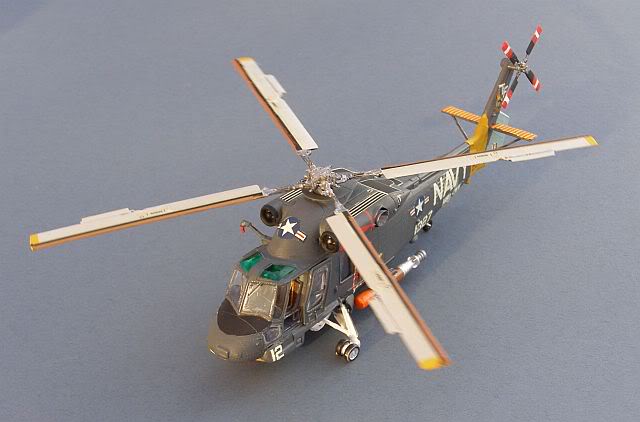
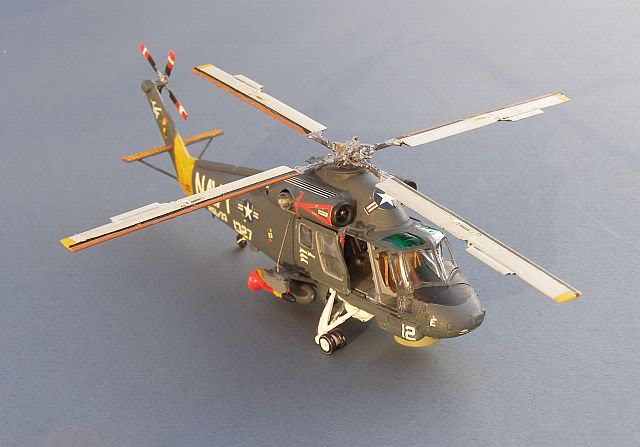
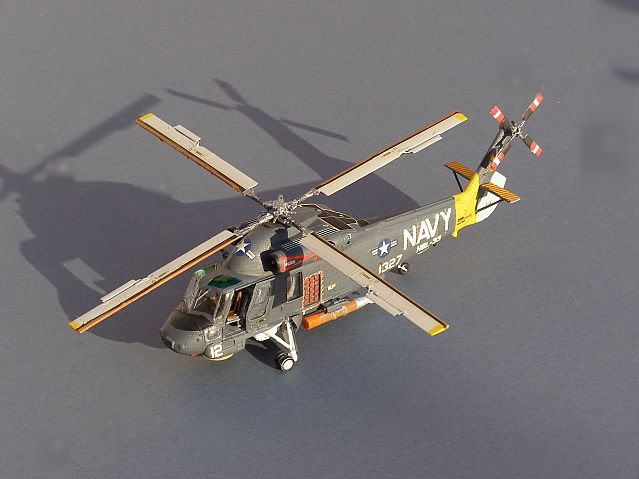
More Helicopters on the Helos Pages
Supermarine Seafire Mk.IIc, 807 Sqn Fleet Air Arm, HMS BATTLER, Operation Avalanche, Salerno 1943.
Airfix (Club Special Edition Kit) 1/72
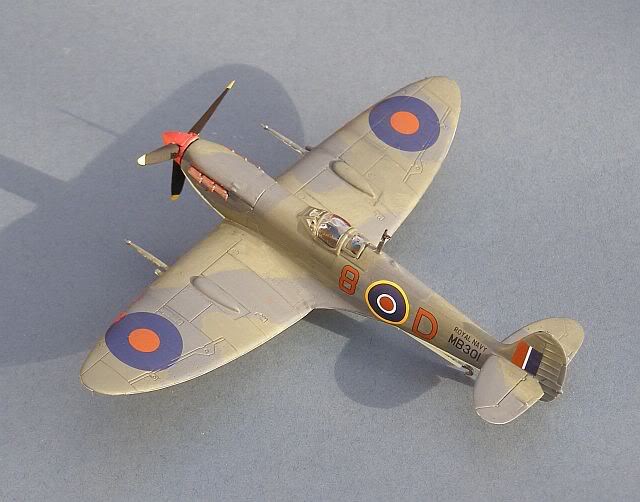
My second Seafire of 2010! This is the kit supplied with Airfix Club membership in 2009 (along with a Wildcat and a Swordfish). Its based on the old Airfix Spitfire Vc kit, which is itself based on the respectable 1974 issue Spitfire Vb kit with a new wing sprue. For this issue, the new sprue also includes the Seafire Hook and fairing, plus some superb transfers/decals produced by Cartograf. There are 2 Seafire decal options - one for an 885 Sqn machine that is very similar to my other Seafire IIc and the other for an 807 Sqn Machine that supported the Salerno invasion of mainland Italy in September 1943.
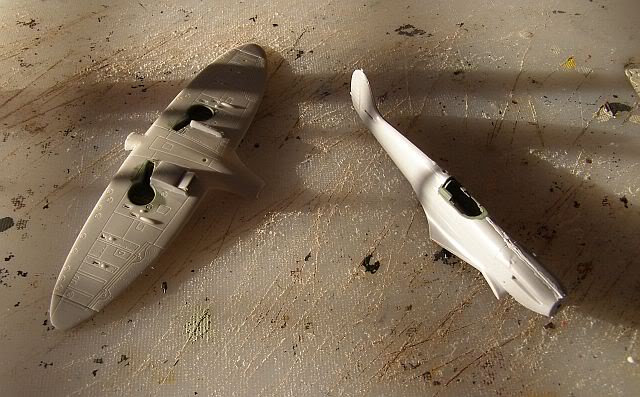
The kit itself is very straightforward to build, although Airfix require you to remove part of the lower after fuselage for the hook, plus the forward lower fuselage for the tropical "Volkes Double V" filter. Neither should pose problems for the experienced modeller, but could frustrate those less used to hacking kits about .
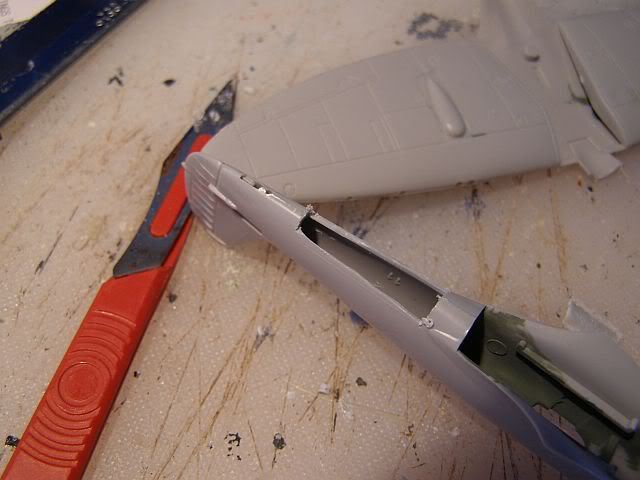
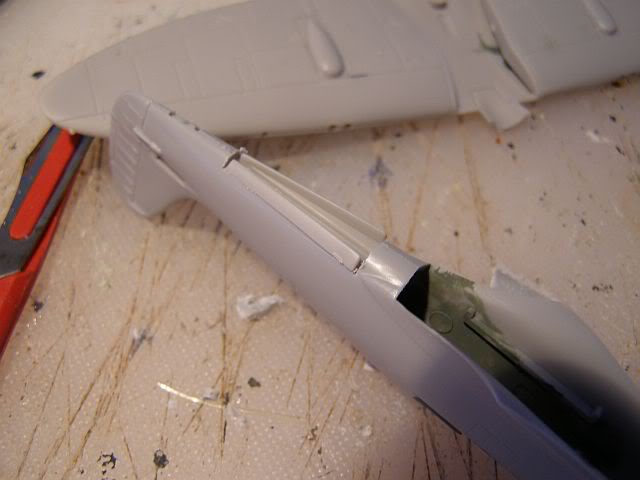
The older sprues have light raised detail, whilst the new ones are deeply engraved. The new wings, whilst nicely moulded and detailed, are also grossly over thick. This is a real shame, because in all other respects they are very nice and there isn't really any way to thin them out. A choice of armoured or early one-piece canopy/windscreen is provided; whilst this is very clear and a good shape, it is also moulded out of very thick plastic, which gives it a strange flattened look when finished.
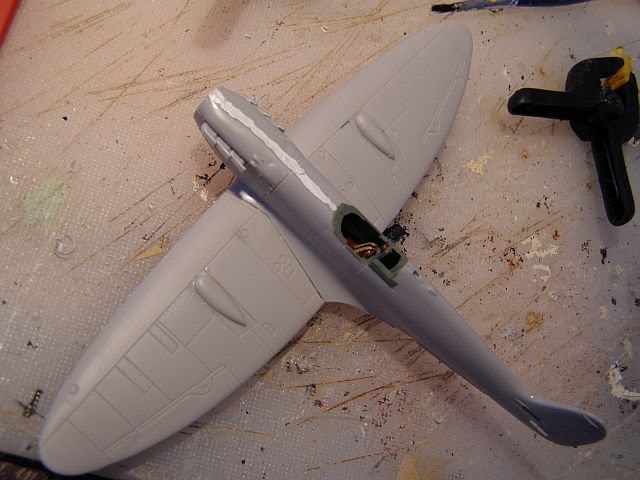
However, in comparison to last month's Italeri Spitfire, this one is far easier to build and (thick wings aside) looks much better. I used a little filler on the forward fuselage, above and below the engine, plus the new hook parts needed a little sanding and filler to belnd them in. Wing roots also needed a smidgen of filler.
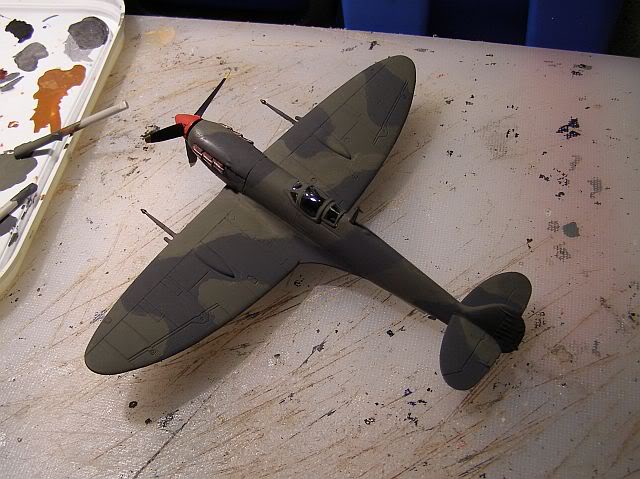
The completed kit looks acceptable though, and with these decals, well worth the cost of Club membership. I had a brief moment of panic when one of my references (an SAM Profile) suggested that this aircraft should have been a Westkand built L.IIc (with 4 blade propeller), but a cross sheck of other references suggests that Airfix have got it right. Phew!
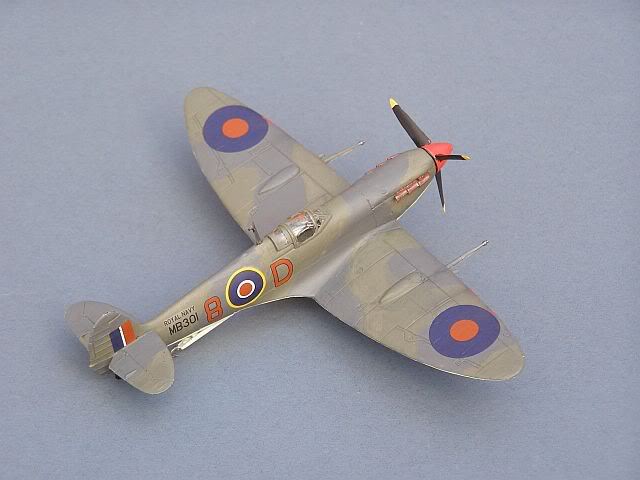
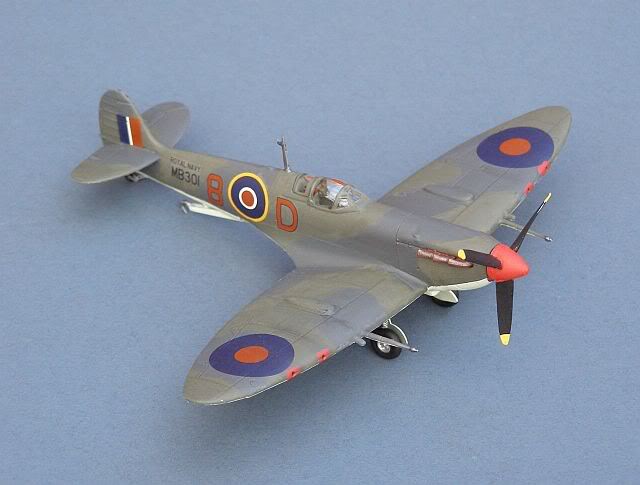
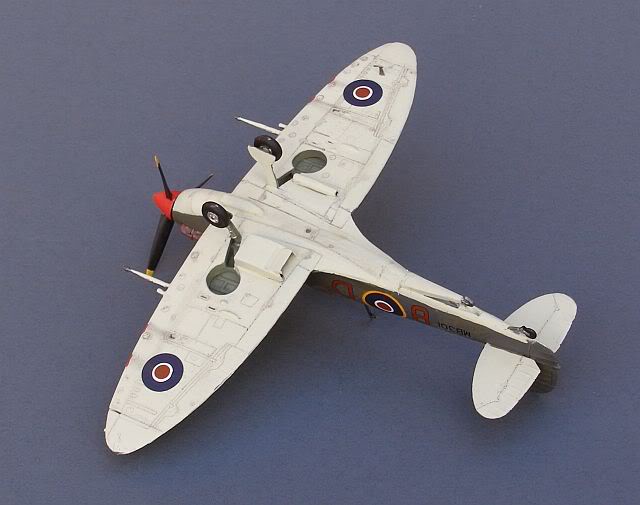
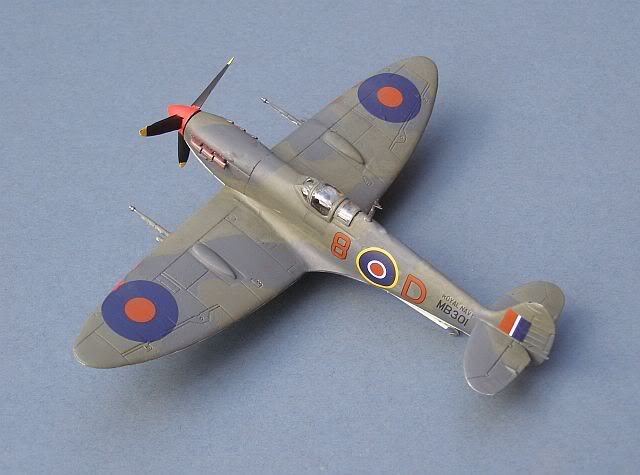
More Seafires on the Seafires Pages
Bristol Sycamore HR Mk.14, 275 Sqn SAR, RAF Thornaby, 1953.
Glencoe 1/72, with own Decals
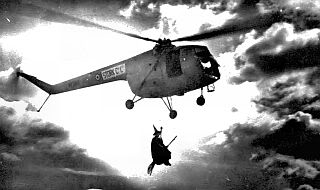
My final build of February celebrates the 100th Anniversary of my local aircraft manufacturer, the British & Colonial Aircraft Company, better known to most of us as Bristol, which was established in February 1910. I hope to continue the Bristol modelling theme throughout the year.
Nowadays, what used to be Bristol is dispersed around BAE Systems, Airbus and Rolls Royce, although gorgeous Bristol Cars are still being made near to FiIton by the only remaining British controlled luxury car manufacturer, albeit in very small numbers.
Not a bad legacy for a municipal bus and tram manufacturer though!
My father did part of his National Service with the RAF, on 275 Sqn at RAF Thornaby, one of several RAF detachments pioneering the use of helicopters as SAR platforms. The picture above shows him hanging from a Sycamore, dressed as a witch, for what reason I have not been able to determine! With its wooden blades and immensely powerful Alvis Leonides piston engine, the Sycamore was one of the first really practical helicopters, and indeed the first to serve with the Royal Air Force. Unlike its rival products from Westland, the Sycamore was an entirely British design, elegant, innovative and well advanced for its time.
The Glencoe kit is rather crude and of dubious scale; it certainly looks to be bigger than the 1/72 it claims. Nevertheless, I haven't seen any other Sycamore kits around! In the issue that I have, it comes with decals for an RAF aircraft (silver and red, not yellow like mine), three Australian Navy machines, a Belgian Air Force machine and one from the West German Army. Mine was missing a few parts and the decals, but good enough for my purposes.
The raw materials:
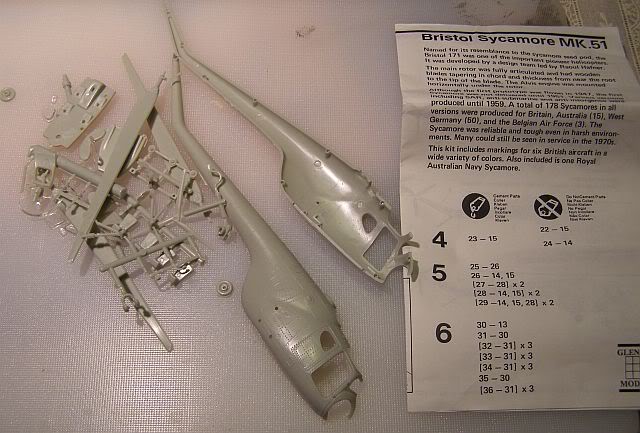
The kit really doesn't provide much in the way of an interior. I struggled to fit the instrument panel as there was no obvious fixing point.
Basic cockpit/cabin assembled.
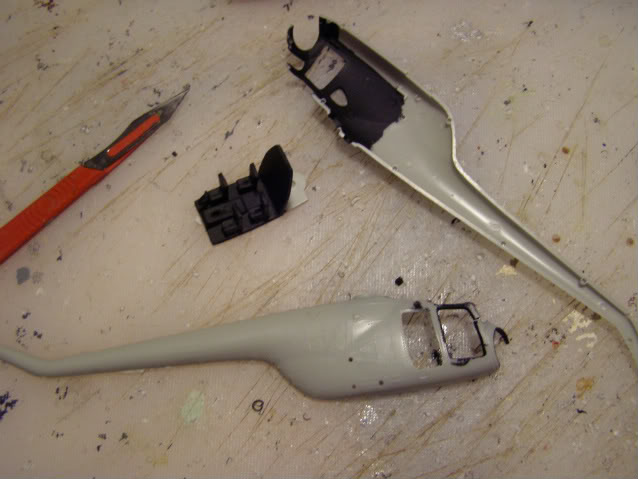
It looks as though the SAR Sycamores always flew with their rear doors removed, possibly for the same safety reasons that the Wasp often did the same (ability to exit the aircraft if ditching in the sea). As a result, I have hacked out the cabin door on the winch side.
Door removed to allow SAR winch to be added:
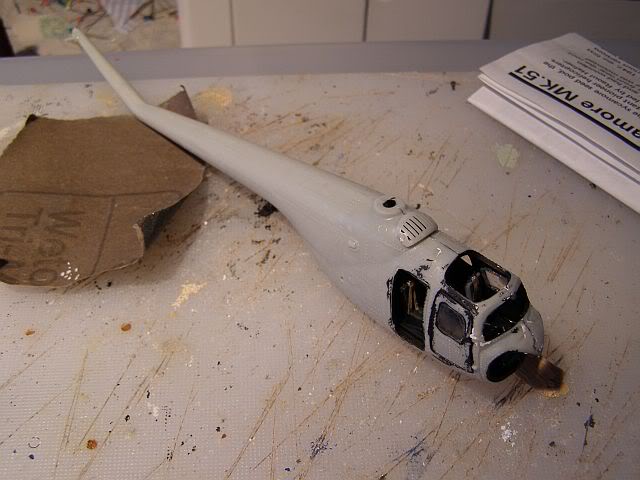
A little Tippex was added to the seams and I sanded off much of the crude rivet detail.
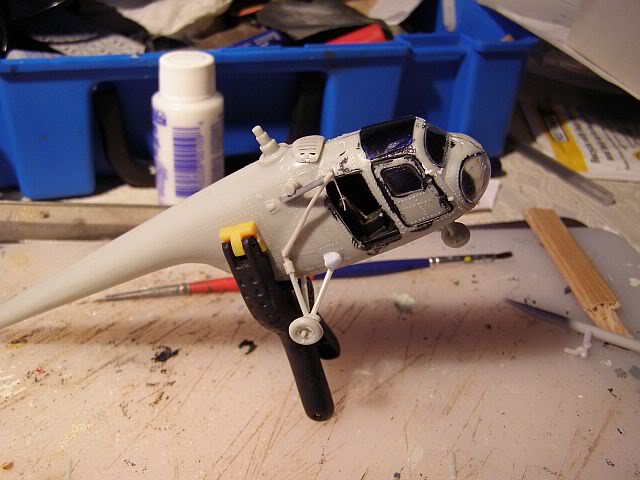
The roof transparency was missing, so an old squash bottle was cut to fit, then coloured blue with magic marker.
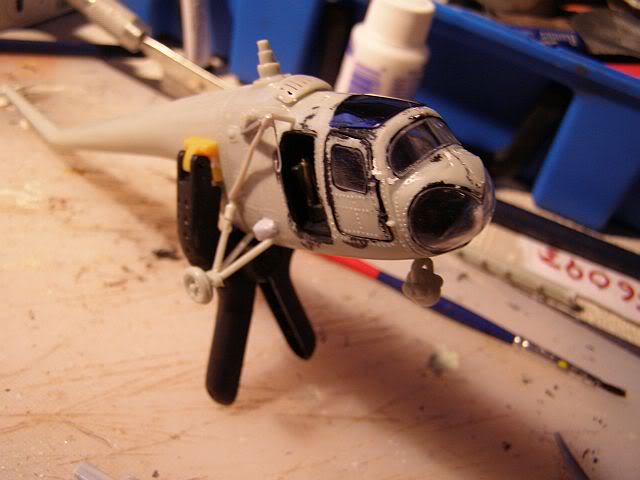
A suitably shaped winch was then scratch built from some stretched sprue. I then applied a white undercoat and couple of coats of yellow:
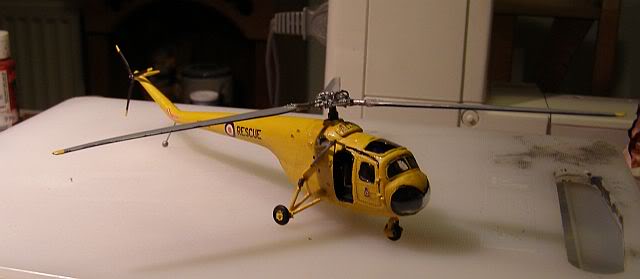
And here we have it, the finished article; not one that will win any prizes, but one that is definitely quite rare, and an important milestone for the British helicopter industry:
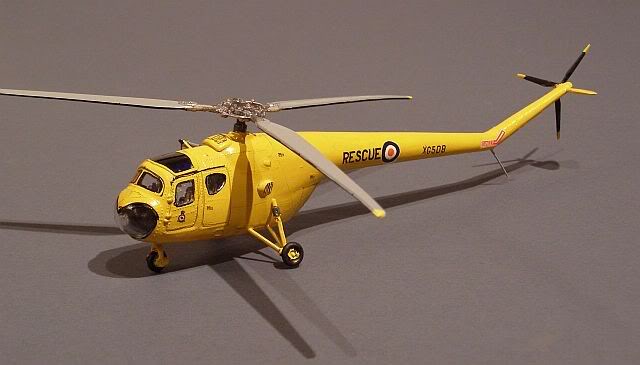
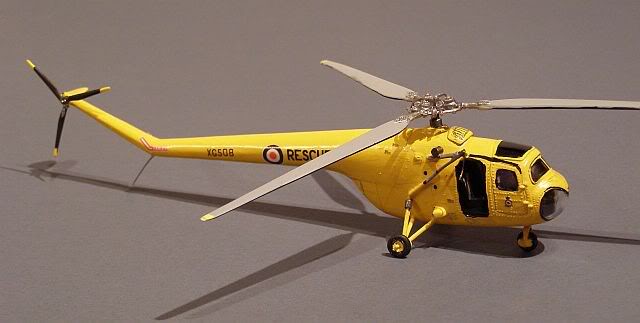

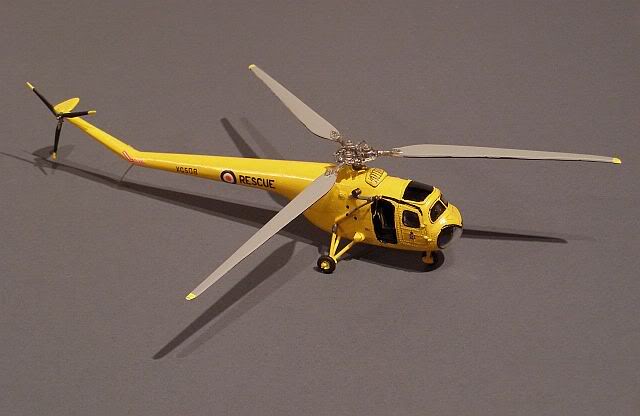
Links
to related pages on this Website: ![]()
![]()
![]()
www.gengriz.co.uk